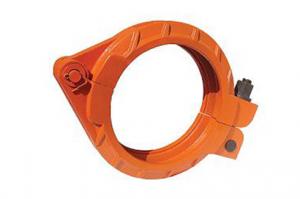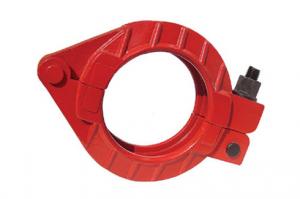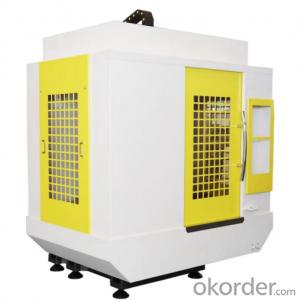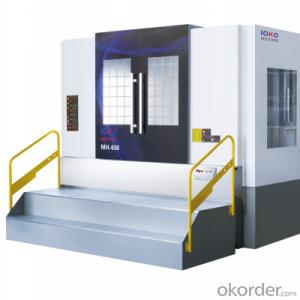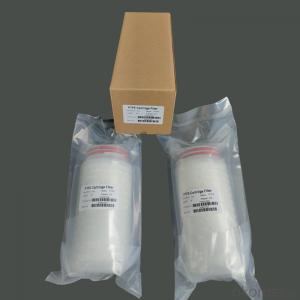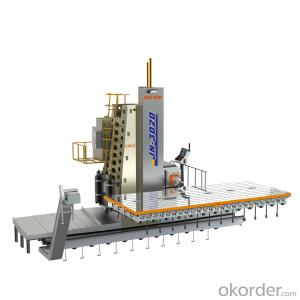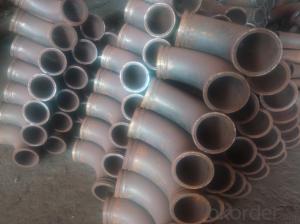Clamp Coupling DN50-DN200
- Loading Port:
- China Main Port
- Payment Terms:
- TT OR LC
- Min Order Qty:
- -
- Supply Capability:
- -
OKorder Service Pledge
Quality Product, Order Online Tracking, Timely Delivery
OKorder Financial Service
Credit Rating, Credit Services, Credit Purchasing
You Might Also Like
Size: 2"-8" (DN50-DN200)
Brand: Putzmeister, Schwing, Sany
Series: Screw Coupling, Bolt Coupling, SnapCoupling
Other products:
1) Putzmeister/ Schwing/ Zoomlion/ SermacRam Pistons
2) Putzmeister/ IHI/ Kyokuto/ Zoomlion/ SanySeperated Piston
3) Wear-resisting board and Cuts ink
4) Rubber hose
5) ST52 steel pipe, elbow, reducer
6) Cleaning seriesand others
- Q:How often should hopper agitator shafts be inspected or replaced in a concrete pump?
- Hopper agitator shafts in a concrete pump should be inspected regularly, ideally during routine maintenance checks, to ensure they are in proper working condition. The frequency of inspections may vary depending on the usage and operating conditions of the concrete pump. However, a general recommendation would be to inspect or replace hopper agitator shafts at least once every 6 to 12 months to prevent any potential issues or malfunctions.
- Q:How do I find the right part number for a specific concrete pump spare part?
- To find the right part number for a specific concrete pump spare part, you can follow these steps: 1. Start by identifying the make and model of your concrete pump. This information is usually found on the pump itself or in the product documentation. 2. Once you have the make and model, visit the manufacturer's website or contact their customer support directly. They will typically have a parts catalog or database where you can search for the specific part you need. 3. Use the provided search tool or browse through the catalog to find the section related to your concrete pump model. Look for the parts that match your description or function. 4. Pay attention to the part numbers listed alongside the descriptions. These numbers are usually unique identifiers for each specific part. Make note of the part number(s) that match the spare part you require. 5. If you are unable to find the required part number on the manufacturer's website or catalog, consider reaching out to authorized dealers or distributors of the concrete pump brand. They may have additional resources or access to parts that are not readily available elsewhere. By following these steps and utilizing the manufacturer's resources, you should be able to find the right part number for your specific concrete pump spare part.
- Q:What are the indications of a faulty concrete pump seal?
- There are various signs that may suggest a defective seal in a concrete pump. Some commonly observed indications are: 1. Leakage: A clear sign of a faulty seal is the presence of leaks in the seal area. If you notice any leaks, it indicates that the seal is not functioning properly and should be replaced. 2. Decreased pumping efficiency: A defective seal can result in reduced pumping efficiency. If you observe that the concrete pump is unable to deliver the same quantity of concrete as before, or if the job takes longer to complete, it could be due to a faulty seal. 3. Heightened noise levels: Another indication of a faulty seal is an increase in noise levels during operation. If you notice any unusual or louder noises emanating from the concrete pump, it may be an indication that the seal is not sealing properly and requires inspection. 4. Vibrations or movement: Faulty seals can also cause excessive vibrations or movement in the pump. If you notice that the pump is vibrating more than usual or if it moves around during operation, it could signify a problem with the seal. 5. Contamination: A defective seal can allow contaminants like dirt, dust, or water to enter the pump. If you observe any signs of contamination in the pump, it is important to inspect the seal and replace it if needed. Promptly addressing any indications of a defective concrete pump seal is crucial to prevent further damage to the pump and ensure safe and efficient operation. Regular maintenance and inspection of the seal can help in avoiding potential issues and prolonging the lifespan of the concrete pump.
- Q:What are the signs of a damaged or malfunctioning electric motor?
- Some signs of a damaged or malfunctioning electric motor may include unusual noises such as grinding or screeching, overheating, excessive vibration, sudden power loss or fluctuations, and a burning smell.
- Q:What are the indications of a worn-out concrete pump clamp?
- Some indications of a worn-out concrete pump clamp may include visible cracks or damage on the clamp, difficulty in tightening or loosening the clamp, leaking of concrete or water from the connection area, and decreased performance or efficiency of the pump due to inadequate sealing.
- Q:How do concrete pump spare parts help in the pumping process?
- Concrete pump spare parts play a crucial role in the pumping process by ensuring the smooth and efficient operation of the equipment. These spare parts, such as seals, cylinders, pistons, and valves, help maintain the integrity of the pump and prevent potential breakdowns or malfunctions. They also assist in controlling the flow and pressure of the concrete, allowing for precise and accurate placement. In summary, concrete pump spare parts are essential components that enhance the reliability, performance, and overall productivity of the pumping process.
- Q:How can one determine the correct voltage and current rating for electrical components in concrete pump spare parts?
- To determine the correct voltage and current rating for electrical components in concrete pump spare parts, several factors need to be considered. Firstly, it is essential to consult the manufacturer's specifications and documentation for the concrete pump and its spare parts. These documents usually provide detailed information about the voltage and current requirements for each electrical component. Paying close attention to these guidelines ensures that the components are operated within their designed parameters. Secondly, it is crucial to understand the electrical system and its requirements. This involves analyzing the power supply available at the site where the concrete pump will be used. Factors such as the voltage level (e.g., 110V, 220V, 440V) and frequency (e.g., 50Hz, 60Hz) of the electrical supply need to be taken into account. Additionally, the maximum current capacity of the electrical system must be considered to prevent overload situations. Furthermore, it is advisable to assess the specific application and operating conditions of the concrete pump. Different components may have varying voltage and current requirements depending on their function and the environment in which they are used. For instance, components installed in outdoor areas may require higher voltage ratings to withstand harsh weather conditions. Lastly, seeking professional assistance from qualified electricians or engineers is highly recommended. They possess the expertise and knowledge to accurately determine the voltage and current ratings for electrical components in concrete pump spare parts. Their experience allows them to consider various factors such as safety regulations, compatibility with the existing electrical system, and any specific requirements of the concrete pump manufacturer. By taking into account the manufacturer's specifications, understanding the electrical system, considering the application and operating conditions, and seeking professional advice, one can effectively determine the correct voltage and current rating for electrical components in concrete pump spare parts.
- Q:What is the purpose of a concrete pump boom?
- The purpose of a concrete pump boom is to provide an efficient and effective method for transferring concrete from the mixer truck to the desired location on a construction site. The boom is typically mounted on a truck or trailer and consists of a series of connected sections that can be extended and maneuvered to reach areas that are otherwise difficult to access. Concrete pump booms offer several advantages over traditional methods of concrete placement. Firstly, they significantly reduce the labor required for concrete placement, as the boom can reach over obstacles such as buildings or other structures, eliminating the need for manual pouring or the use of cranes. This saves time and money on a construction project. Additionally, concrete pump booms allow for precise and accurate placement of concrete. The boom can be controlled remotely, allowing the operator to position the nozzle exactly where the concrete is needed. This ensures a more uniform and even distribution of concrete, resulting in a higher quality finished product. Furthermore, concrete pump booms increase safety on construction sites. By eliminating the need for workers to physically transport and pour concrete, the risk of injuries and accidents is significantly reduced. The boom also allows for the placement of concrete in hard-to-reach areas, minimizing the need for workers to climb or work at heights, further enhancing safety. In conclusion, the purpose of a concrete pump boom is to provide a more efficient, precise, and safe method for transferring and placing concrete on construction sites. Its ability to reach over obstacles, accurately control placement, and reduce labor requirements make it an invaluable tool in the construction industry.
- Q:Are there any specific troubleshooting steps for identifying issues with concrete pump spare parts?
- Yes, there are specific troubleshooting steps that can be followed to identify issues with concrete pump spare parts. 1. Visual Inspection: Conduct a thorough visual inspection of the spare parts, looking for any signs of wear, damage, or misalignment. Check for cracks, breaks, or any other visible signs of damage. 2. Functionality Test: Test the functionality of the spare parts by operating the concrete pump. Pay attention to any abnormal noises, vibrations, or irregular movements. This can help identify issues with the spare parts. 3. Pressure Test: Perform a pressure test to ensure that the spare parts can handle the required pressure. This can be done by connecting a pressure gauge to the pump and checking if it reaches the desired pressure levels. Any abnormal pressure fluctuations can indicate issues with the spare parts. 4. Flow Test: Conduct a flow test to evaluate the flow rate of the concrete through the pump. Check if the flow is consistent and smooth. Any blockages or irregular flow patterns can indicate issues with the spare parts. 5. Check for Leaks: Inspect the spare parts for any leaks or fluid seepage. Leaks can indicate faulty seals, gaskets, or fittings. Use a suitable leak detection method, such as using a dye or pressure test, to identify the source of the leak. 6. Consult Technical Manuals: Refer to the technical manuals provided by the manufacturer for troubleshooting guidelines specific to the concrete pump spare parts. These manuals often contain detailed troubleshooting steps and recommended solutions for common issues. 7. Seek Expert Advice: If you are unable to identify the issue or troubleshoot effectively, it is advisable to consult with a qualified technician or the manufacturer's technical support team. They can provide expert guidance and assistance in identifying and resolving complex issues with concrete pump spare parts. By following these troubleshooting steps, it becomes easier to identify any issues with concrete pump spare parts and take appropriate measures to address them promptly.
- Q:How does a hopper agitator motor ensure consistent concrete mixing?
- Consistent concrete mixing is guaranteed with the use of a hopper agitator motor, which is responsible for providing the required agitation and movement within the hopper. By rotating and moving the agitator blades, the motor effectively mixes the concrete ingredients. The main purpose of the hopper agitator motor is to avoid the settling or separation of the concrete during the mixing process. Through its rotation, a swirling motion is generated inside the hopper, ensuring even distribution and thorough blending of all the ingredients. This prevents any formation of clumps or irregularities in the final concrete mixture. Moreover, the motor also aids in breaking up any lumps or clusters that may have formed within the hopper. This action further enhances the uniformity of the mixture, ensuring proper blending of components such as cement, aggregates, water, and additives. Furthermore, the continuous movement of the agitator blades helps in maintaining the desired consistency and homogeneity of the concrete mix. It prevents heavier particles from settling at the bottom of the hopper, ensuring consistent mixture throughout the entire mixing process. In conclusion, the hopper agitator motor is of utmost importance in achieving consistent concrete mixing. Its role includes providing necessary agitation, preventing segregation, breaking up lumps, and maintaining uniformity. The motor's rotational motion and well-designed agitator blades contribute to well-mixed and homogeneous concrete, which is crucial for durable and high-quality concrete structures.
1. Manufacturer Overview |
|
|---|---|
| Location | |
| Year Established | |
| Annual Output Value | |
| Main Markets | |
| Company Certifications | |
2. Manufacturer Certificates |
|
|---|---|
| a) Certification Name | |
| Range | |
| Reference | |
| Validity Period | |
3. Manufacturer Capability |
|
|---|---|
| a)Trade Capacity | |
| Nearest Port | |
| Export Percentage | |
| No.of Employees in Trade Department | |
| Language Spoken: | |
| b)Factory Information | |
| Factory Size: | |
| No. of Production Lines | |
| Contract Manufacturing | |
| Product Price Range | |
Send your message to us
Clamp Coupling DN50-DN200
- Loading Port:
- China Main Port
- Payment Terms:
- TT OR LC
- Min Order Qty:
- -
- Supply Capability:
- -
OKorder Service Pledge
Quality Product, Order Online Tracking, Timely Delivery
OKorder Financial Service
Credit Rating, Credit Services, Credit Purchasing
Similar products
New products
Hot products
Related keywords


